Physics Faculty Members & Research Fields
Faculty Members:
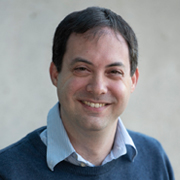
Dr. Iair Arcavi (Senior Lecturer) works on extragalactic observational astrophysics, specifically astronomical transients, including understanding the diversity of core-collapse supernovae and connecting them to their massive star progenitors, mapping the observational properties of tidal disruption events and using them to study accretion physics and the population of supermassive black holes, and electromagnetic followup of gravitational wave events to find the optical flares (known as macronovae or kilonovae) produced by neutron star mergers and using them to constrain the physics of neutron stars, their mergers, and their roles in creating the heavy elements.
Research achievements include: performing the first characterization of the core-collapse supernova population in dwarf galaxies to constrain the role of metallicity in driving massive star evolution and explosion, obtaining some of the earliest and densest observations of supernovae in order to constrain their progenitor properties and explosion physics, identifying a new class of rapidly rising luminous supernovae, as well as other peculiar explosions, which defy current explosion models, establishing the first optical class of tidal disruption events and discovering their peculiar (and still mysterious) host-galaxy preference, and leading one of the teams that discovered the first kilonova following the gravitational-wave detection of a neutron star merger.
Future directions include: leveraging the large-scale transient surveys coming online (ZTF, BlackGEM, LSST) together with rapid-response facilities such as the Las Cumbres Observatory robotic global telescope network, and new observation triggering, and data management and sharing software such as the Supernova Exchange, TDE Central, and the GW Treasure Map, to expand and improve the study of the above topics through several order-of-magnitude increases in the number of infant supernovae, tidal disruption events, and neutron-star mergers observed, and the insights gained from such samples.
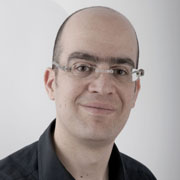
Prof. Rennan Barkana (Full Professor) focuses on the era of the formation of the first stars and resulting signatures in 21-cm radio waves. This includes such topics as cosmic dawn (early X-ray heating, Lyman-alpha coupling, Lyman-Werner feedback), cosmic reionization (stars and black holes as UV sources, photoheating feedback), dark matter (possible interactions that cool the cosmic gas, effects of the streaming velocity relative to normal matter), and the corresponding 21-cm signatures (in the sky-averaged global 21-cm signal, in the power spectrum of 21-cm fluctuations, and in 3-D intensity maps).
Research achievements include: showing that a surprising signal observed by the EDGES radio telescope could be the first proof of a non-gravitational interaction between dark matter and normal matter; pointing out that early X-ray sources likely had hard spectra, resulting in a delayed cosmic heating and a more complex 21-cm signal than previously expected; showing that early galaxies were affected by the streaming velocity of dark matter relative to normal matter in a way that predicts a clear observational signature.
Future directions include: comparing model predictions based on the above inputs with data from radio telescopes ranging from small global experiments to the Square Kilometre Array.
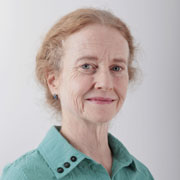
Prof. Sara Beck (Associate Professor) is an observational astrophysicist working mainly on problems of star formation and galaxy evolution. Research topics include: detection and characterization of young super star clusters, star formation efficiency, fueling and feedback, kinematics of ionized gas in star clusters, the molecular medium of starburst galaxies, kinematics of molecular gas in interacting and post-interaction galaxies, ionized winds from young star clusters, the emergence of young stars and star clusters from their natal clouds, and the formation and dispersal of interstellar dust.
Recent Research Achievements: Discovery of regions of extremely high star formation efficiency in nearby galaxies, showing that young embedded star clusters have slow turbulent winds, which has led to new models of cluster winds; discovery of molecular gas filaments accreting onto and fueling very young star clusters in nearby starburst galaxies, demonstration that the dust-to-gas ratio in starburst galaxies can vary by orders of magnitude within a few parsecs and that dust creation can be extremely rapid, and the first observations of gas accretion halted by feedback from young star clusters.
Future Directions: Observational capabilities in the infrared, sub-millimeter and millimeter regimes are growing, with new facilities coming online and existing ones improving. As more precise and sensitive observations become possible, this work can expand to cover a wider range of astronomical settings.
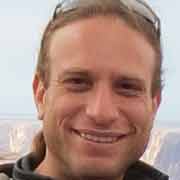
Dr. Omer Bromberg (Senior Lecturer) works on various topics related to relativistic astrophysical systems, and on magneto-hydrodynamic simulations of astrophysical jets. His research includes running large-scale 3D magneto-hydrodynamic simulations of jet formation and propagation, and studying their physical properties. Such jets are formed in the centers of active galaxies and in the hearts of dying massive stars and are responsible for some of the most energetic explosions we observe. In a pioneering work in 2016 Bromberg and an associate showed how the interaction of jets with the environment lead to the transformation of about half of the magnetic energy into other forms of energy, which can later be used to emit the radiation we observe. Bromberg’s group is currently studying the various instability processes that take place in the jets by combining different numerical tools in a novel way. In another project led by a student they are building a numerical tool that will allow the calculation of the polarization level of the radiation emitted by these jets. Such a tool will allow in the future to identify regions in the jets where large magnetic fields are being destroyed and converted into other forms. Bromberg has one of the largest computational clusters used by a single researcher in Israel, with 1800 cores. This cluster forms the backbone of his group’s numerical research.
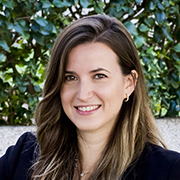
Dr. Shany Danieli is an observational astrophysicist whose work focuses on studying the properties of galaxies to understand a wide range of physical phenomena in the universe.
Her current research investigates faint and low-mass galaxies beyond our Milky Way Galaxy, which are nearly impossible to detect using traditional methods. These galaxies are particularly important for studying dark matter, a mysterious substance that constitutes over 80% of the universe’s matter, yet whose nature and properties remain unknown. Dr. Danieli focuses on discovering and analyzing faint galaxies beyond the Milky Way, utilizing advanced telescopes on Earth and in space, and using innovative observations.
Her work integrates observational and theoretical evidence from studies of galaxies and globular clusters to build a cohesive narrative of the nature of dark matter and its important interplay with baryonic matter on small scales. This research aims to address critical questions such as: How common are low-mass galaxies beyond the Milky Way? What are their compositions, and what physical processes govern their formation and evolution? And what are the relationships between dark matter and visible matter in galaxies?
Additional areas of expertise:
- Imaging and spectroscopy
- Galaxy Formation and Evolution
- Galaxy dynamics
- Dark matter
- The low surface brightness universe
- Astronomical surveys

Prof. Amir Levinson (Full Professor) works on problems at the forefront of high-energy astrophysics, including: modeling of black hole activation; formation, dynamics and emission of relativistic jets, and applications to AGNs, microquasars and gamma-ray bursts; theory of radiation-mediated shocks and its application to shock breakout in various stellar explosions and to photospheric emission in GRBs; numerical simulations of AGN wind feedback in young galaxies; magnetar models of fast radio bursts.
Research achievements include: development of analytic and numerical methods that enable detailed calculations of the structure and emission of radiation-mediated shocks during breakout from exploding stars, in an attempt to predict the breakout signal in SNe and GRBs; studies of photospheric emission in GRBs from first principles; first-ever general relativistic particle-in-cell simulations of plasma production and consequent gamma-ray emission in a starved black hole magnetosphere, and its implications for gamma-ray emission from radio galaxies and RIAF sources, as well as for the physics involved in the production of Blandford-Znajek jets. Much of this work is in progress and its development continues.
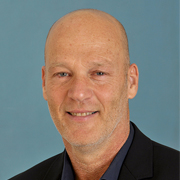
Prof. Dan Maoz (Full Professor) works on a range of topics in Galactic and extragalactic observational astrophysics, including: discovery and characterization of extrasolar planets, mainly via gravitational microlensing; stellar remnants (white dwarfs, neutron stars, black holes), the debris of their planetary systems, their binary companions (constituting potential gravitational wave sources and the progenitor systems of supernovae); progenitors, rates, and physics of supernovae as a function of cosmic time and environment; the nature of fast radio bursts; Milky Way chemical evolution; galaxy clusters; and super-massive black holes in galactic nuclei, both actively accreting and quiescent.
Research achievements include: multiple measurements of the explosion rates of supernovae over a range of cosmic times and environments; analysis of those rates, supporting a double-white-dwarf merger origin for Type-Ia supernovae, and providing essential input on supernova element yields for understanding Galactic and cosmic chemical evolution; the first controlled microlensing planet-search experiment, yielding the frequency and separation distribution of extrasolar snowline-region planets; first precise characterization of the Milky Way's population of double white dwarfs, their gravitational-wave-driven merger rate, and their viability as progenitors of Type-Ia supernovae; discovery of low-level periodic photometric modulation in many white dwarfs, and a UV study of its connection to the accretion of planetary debris.
Future directions include: using the massive data sets from new astronomical facilities (Gaia, TESS, SDSS-V, JWST, Euclid, WFIRST) for order-of-magnitude improvements in the measurement precision and accuracy in all of the above topics.
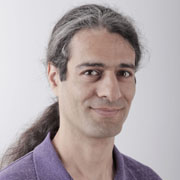
Prof. Ehud Nakar (Full Professor) works on a range of topics in theoretical and numerical high energy astrophysics and in particular the physical processes that are active in sources of high energy radiation, cosmic-rays, neutrinos and gravitational waves. Among the astrophysical phenomena that are being explored are neutron-star mergers, gamma-ray bursts, supernovae and soft gamma-repeaters. Physical processes that are studied include collisionless and radiation-mediated shocks, shock breakouts, particle acceleration, relativistic hydrodynamics and radiative transfer. The study combines high-performance computing numerical simulations and analytic work.
Research achievements include: Developing the theory of relativistic shock breakouts; deriving the structure of the outflow in the first binary neutron star merger; theoretical interpretation of the first observation of short gamma-ray bursts.
Future directions include: Using the combination of gravitational waves measured by LIGO/VIRGO and the electromagnetic signal to study the physics and astrophysics of neutron star mergers.

Prof. Dovi Poznanski (Associate Professor) works on various topics in observational astrophysics and cosmology. There are two main threads in his research, the study of the supernovae arising from the collapse of massive stars, and the use of Machine Learning, and other Big-Data methods. The latter includes the study of distant galaxies, nearby stars, quasars, the interstellar medium, and systematics in cosmological measurements.
Research achievements include: the discovery of a correlation between the explosion energy and stellar progenitor mass for the most common type of supernova, thus putting new constraints on their elusive explosion mechanism; the study of core collapse supernovae as competitive cosmological probes; the development of a machine-learned method to compare spectra, which was then used to find and study further the most unusual galaxies in the largest existing sample, and to triple the known sample of a very rare and poorly understood type of quasar.
Future directions include: with the growth in data quantity and complexity, these methods become essential in order to allow for discovery, as well as a full exploitation of the information they provide. What is now exploratory use of new tools, is soon to become mainstream, essential, and transformative, just as it has become in our everyday (digital) life.
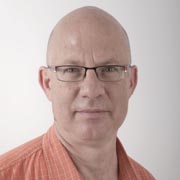
Prof. Amiel Sternberg (Full Professor) is a theoretical astrophysicist working in the fields of galaxy evolution, star formation, cosmic structure, black holes and active galaxies, intergalactic and interstellar medium, astrochemistry and plasma astrophysics, dynamics, spectroscopy and radiative transfer, computational and analytic methods and theory of fundamental processes.
Recent research achievements include: development of analytic and hydrodynamic plasma models for the multiphased structures of the circumgalactic medium around galaxies; fundamental theory for the atomic to molecular transition in star-forming interstellar gas clouds; computation of the chemical and thermal phase properties of the neutral interstellar medium in the first galaxies in the young Universe; analysis and observations of galaxy rotation curves and dark matter properties at the peak epoch of cosmic star-formation; simulations of Lyman alpha emitting cosmic filaments in cosmological hydrodynamics; numerical hydrodynamic modeling of evolving supernova shells.

Dr. Benjamin Trakhtenbrot (Senior Lecturer) main research interests are related to supermassive black holes, with masses of millions to billions larger than our sun, which reside in the centers of most galaxies in the universe. His recent and present research activities try to understand the growth of such black holes, and how this may be linked to galaxy evolution, over cosmic history -- reaching the first billion years after the Big Bang. One of the main areas of activity, and also one of his key achievements in recent years has been the BASS project (www.bass-survey.com), which he initiated with the goal to establish a highly complete census of powerful accreting supermassive black holes in the low-redshift universe. This is done through an international collaborative effort involving over 50 astronomers to obtain and analyze multi-wavelength data, using some of the most sophisticated ground- and space-based telescopes. Another significant research project involves a comprehensive study of the first generation of supermassive black holes, using the Very Large Telescope, the ALMA sub-mm interferometer (both in Chile), and the Hubble Space Telescope. Dr. Trakhtenbrot is currently exploring black holes that experience a sudden change in their accretion rate, observed through flares in large time-domain surveys. This research front is foreseen to grow significantly in the near future, in preparation for the large SDSS-V project, in which he is involved (including co-chairing one of the Science Working Groups and serving on the Collaboration Council).

In my research, I strive to understand how massive stars evolve, from birth to final core-collapse into neutron stars or black holes. I do this by collecting multi-wavelength spectroscopic, photometric, and interferometric data with the world's largest telescopes such as the Very Large Telescope (VLT). I develop and utilize state-of-the-art model atmospheres and spectral disentangling algorithms to derive robust constraints on the progenitors of compact objects (Wolf-Rayet stars, OB-type stars, stripped stars). My research focuses on massive binaries, which represent the most common configuration of massive stars.
I am a co-developer of the Potsdam Wolf-Rayet (PoWR) code and spectral disentangling software. I am a consortium member of 4MOST and MSE.
I am a consortium member of European Extremely Large Telescope’s (E-ELT) 2nd light instrument MOSAIC, leading to the direct involvement of TAU in the development of the largest telescope currently built.
I am the PI of the Binarity at LOw Metallicity (BLOeM) ESO Large Programme.
Key research interests include:
-
Spectroscopy of massive stars and binaries
-
Advanced evolutionary stages of massive stars (e.g., Wolf-Rayet stars)
-
Search for black holes in binaries
-
Post-interaction binaries (e.g., Oe/Be stars, helium stars)
-
Development of model atmospheres for massive stars
-
Massive stars at low metallicit
Professors Emeriti:

Dr. Noah Brosch (Principal Research Associate, retired) remains active in observational astronomy research. He is conducting a long-term project to detect traces of merging and disruption events near disk galaxies via very deep imaging using the 0.7-m telescope of the Wise Observatory. The sample of more than 100 galaxies has been almost completely observed; the final images reach faint levels of 28-28.5 mag/square arcsec. Analysis will now follow. As a comparison sample, similar observations were performed of some Hickson Compact Groups where, in some cases, extended tidal structures were detected, including one where a 300 kpc long structure was identified. Brosch is also continuing his efforts to develop and launch a small telescope for UV astronomy, together with Indian and Spanish colleagues. Future directions include acquiring additional data from large telescopes (e.g. SALT) to deepen the study of the more promising systems.
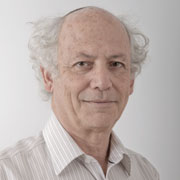
Prof. Tsevi Mazeh (Professor Emeritus) works on a range of topics in exo-planetary and binary observational astrophysics, including: discovery and characterization of extrasolar planets, mainly via transits and the radial velocity techniques; detecting binaries with dormant black hole secondaries via analysis of available light curves; analysis of circumbinary planets; analysis of the Gaia data sets.
Research achievements include: Analysis of Kepler space mission data to derive rotation periods of 34,000 main-sequence stars with the autocorrelation technique, making this the largest sample of stellar rotation periods to date.; derivation of transit timing catalog of 2600 Kepler Objects of Interest (KOIs), using the full 17 quarters of the mission, detecting 260 KOIs that showed significant TTVs with long-term variations; constructing a simple algorithm, BEER, to search for a combination of the BEaming, Ellipsoidal and the Reflection/heating periodic modulations, induced by short-period non-transiting low-mass companions; using this technique to discover a new exoplanet, Kepler-76b, at an orbital period of 1.54 days around a 13.3 mag F star; pointing to the significance of the dearth of exoplanets with Neptune mass and radius with orbital periods below 2-4 d. The existence of this desert is similar to the appearance of the so-called brown-dwarf desert that suggests different formation mechanisms for planets and stellar companions with short orbital periods.
Future directions include: using the massive data sets from new astronomical facilities (Gaia, TESS, SDSS-V) for order-of-magnitude improvements in the discovery of dormant black holes and circumbinary planets.

Prof. Hagai Netzer (Professor Emeritus) works on several topics in extragalactic astronomy including: the formation and growth of the first super massive black holes; star formation in the local and early Universe; the parallel evolution of black holes and stellar mass in galaxies; measuring black hole mass using reverberation mapping and direct imaging; the physics and the properties of accretion disks around super massive black holes; the physics of ionized gas and dust in astronomical objects; mergers of galaxies in the early universe; AGN and star formation feedback in various types of galaxies.
Research achievements include: The first successful reverberation mapping of very luminous AGN at high redshift; the most detailed reverberation mapping of a local AGN using HST; the first direct imaging of the ionizing gas in a quasar; characterizing the properties of AGN accretion disks including measuring the black hole spin; identifying the influence of high Eddington-ratio black holes on the surrounding gas; discovering giant galaxy mergers and measuring their star formation rate at z=5; identifying unique star formation in LINERS; finding a new way to identify AGN-driven winds using IR observations.
Future directions: using VLT-Gravity, VLT-SINFONI, JWST, Keck and XMM-Newton to improve and explore new ways in the above topics.
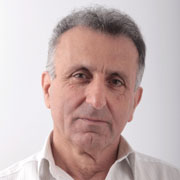
Prof. Yoel Rephaeli (Professor Emeritus) pursues a range of topics in cosmology and high-energy astrophysics, including: properties of the cosmic microwave background (CMB) radiation; calculations of spectral and spatial signatures produced by the interaction of the CMB with hot gas in galaxy clusters; use of galaxy clusters as improved cosmological probes by joint, multi-spectral analyses of current and future microwave, optical, and X-ray measurements; studies of non-thermal phenomena (e.g., energetic particles, magnetic fields) in star-forming galaxies, radio galaxies, and galaxy clusters by comparisons of predictions from modeling the particle spectro-spatial distributions and their radiative yields (from all relevant leptonic and hadronic processes) with radio, X-ray, and gamma-ray measurements.
Research achievements include: dynamical analyses of mass profiles of several galaxy clusters; development of a new expanded merger-tree description of galaxy cluster evolution; neutrino mass inference from surveys of CMB signatures imprinted by Compton scattering in galaxy clusters; successful prediction of the level of gamma-ray emission in nearby starburst galaxies (measured by the Fermi satellite).
Future directions include: improved determination of galaxy cluster properties from planned CMB measurements with the Simons Observatory telescope array; detailed modeling of the distributions of energetic electrons and protons in galactic halos.

